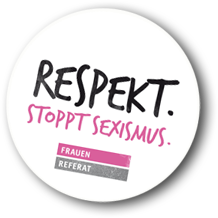It is a difficult word; nevertheless, it is worth knowing, understanding and using.
The term was originally coined by black feminists in the USA. For example, in the 80s, when Audre Lorde was a guest professor at the University in Berlin, she used it to draw attention to racism within the predominantly white German feminist movement. She wanted to show that it is important to stand together as women and fight against injustice, but that there are also differences between women, which make it difficult for some women in this world.
So when we say at FeM that we are working “according to an intersectional approach“, we mean that we do not perceive the girls who come to us as one unified group. We know that each biography and personality is affected and influenced by different and interwoven categories/forms of discrimination (intersections).
That is why a black girl is affected by discrimination in a different way than a white girl who is also experiencing sexism, but does not experience racism at the same time.
It is not easy to just add up the forms of discrimination – experiencing racism plus experiencing sexism – as many girls and women of color are facing a form of sexism influenced by racism, such as exoticization. Maybe you know sayings such as “She is such a wild woman, it is in her blood.” Such statements are mostly made about girls and women of color and they are racist, as they derive from using the sex, skin color, origin and even blood to attribute certain characteristics to people. In many cases, these characteristics are not highly regarded by society.
Girls’ experiences should not be “played off” against each other. The approach is rather to try and make girls aware of their own privileges (i.e. advantages), and therefore to consider girls as a whole, and not to assume that everyone has the same horizon of experience.
Other than class, race and gender, there are more examples of „intersections”, such as body issues (regarding health, age and attractiveness), religious affiliation and sexual orientation.
